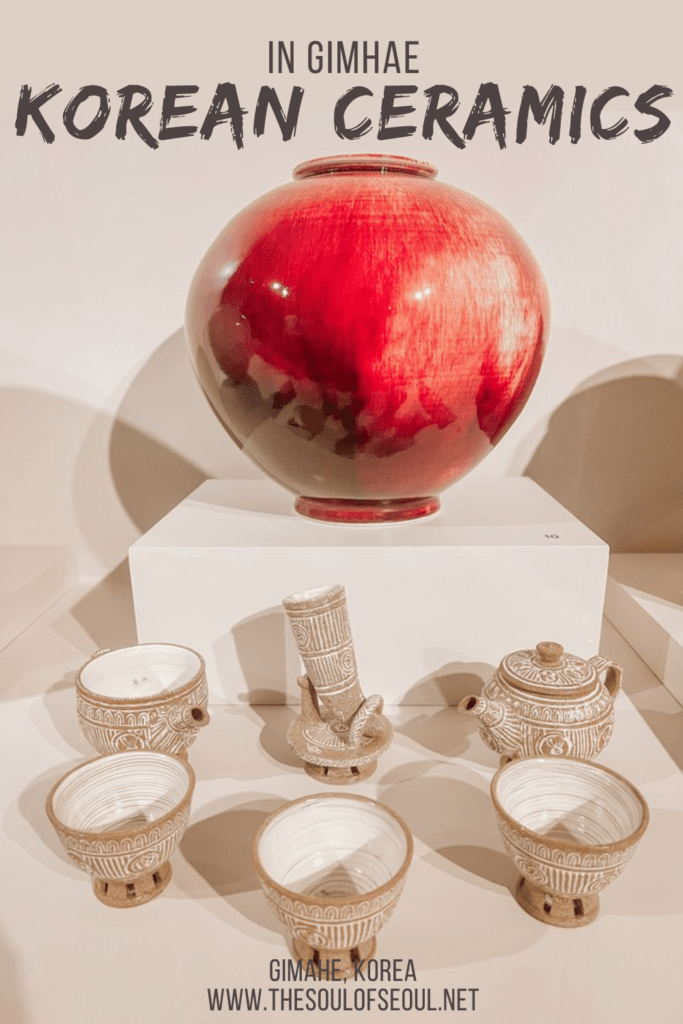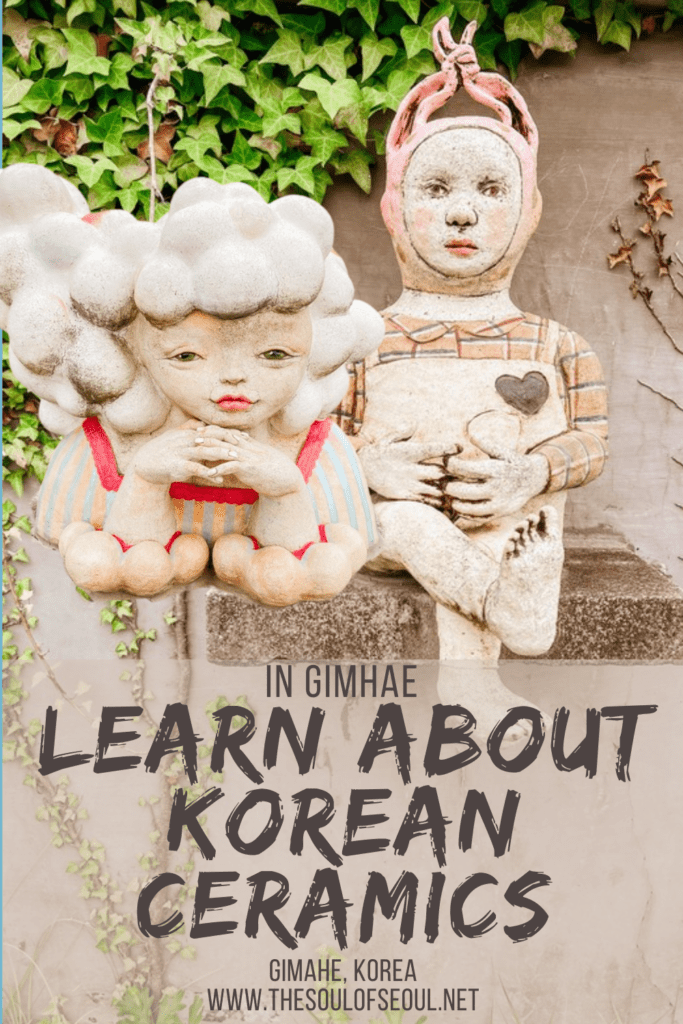Learn About Korean Ceramics At The Clayarch Gimhae Museum
Last Updated on November 16, 2023
As my in-laws reside in Gimhae, Korea, I’m constantly on the lookout for interesting places to go when we visit them over the holiday periods. On this last trip we found the very interesting Clayarch Gimhae Museum (클레이아크 김해미술관) and the museums that surround it.
Gimhae is a city with a long tradition in crafts like Gaya pottery and Buncheong ware that was produced during the Joseon Dynasty and so the region today has created a thriving creative industry for visitors to learn more, see more, and create more. There are some really interesting things to do in Gimhae if you happen to be in the area.
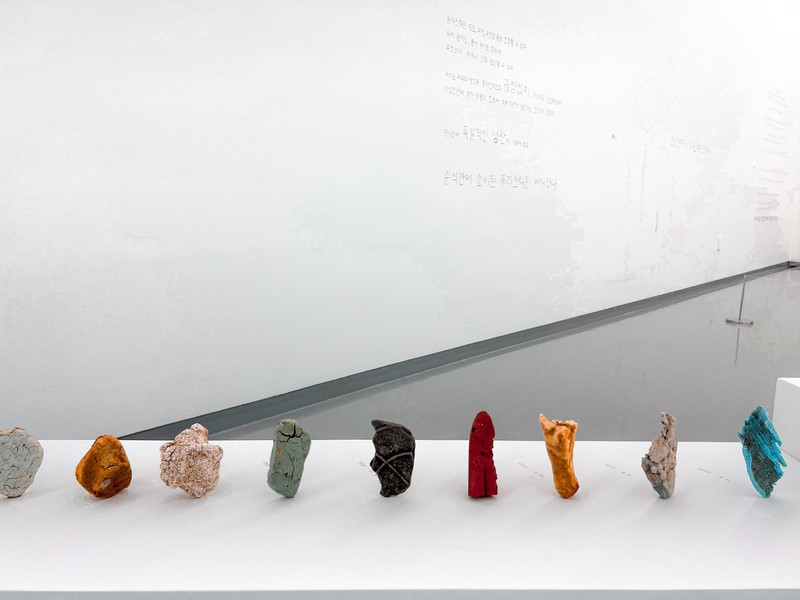
If you’re planning to visit Gimhae, Korea, don’t overlook learning about the vast ceramics history in the area:
- How To Get There
- Basic Info
- Discover Ceramics and Architecture
- Outdoor Sculptures and Eco-Friendly Structures
- Exhibitions and Experiences
- What To Visit Nearby
- Seasonal Events To Celebrate Ceramics
(This post contains affiliate links, which means I receive a certain percentage of a sale if you purchase after clicking at no cost to you. Thank you for your support.)
How To Get There
Address: 275-51 Jillye-ro, Jillye-myeon, Gimhae-si, Gyeongsangnam-do (경상남도 김해시 진례면 진례로 275-51)
Directions: From the KTX Jinyeong Station, you can take bus 13 or 15 to Jillye Agricultural Cooperative. The trip takes about 30 minutes and the stop is just outside of the museum. Alternatively, you could take a taxi from the station which would take about 10 minutes. You could also take bus 44 from Bonghwang Station on the light rail to the same bus stop.
Basic Info
Hours: Tuesday – Sunday: 10:00am ~ 6:00pm
Admission: Adults: W2,000; Teenagers: W1,000; Children: W500
Experiential Programs: There are extra fees for the programs and classes depending on what you sign up for. There are ceramics classes, mosaic classes, and more options. When you purchase your entrance ticket, ask for the options as the classes are hosted at various times throughout the day.
Website: www.clayarch.org

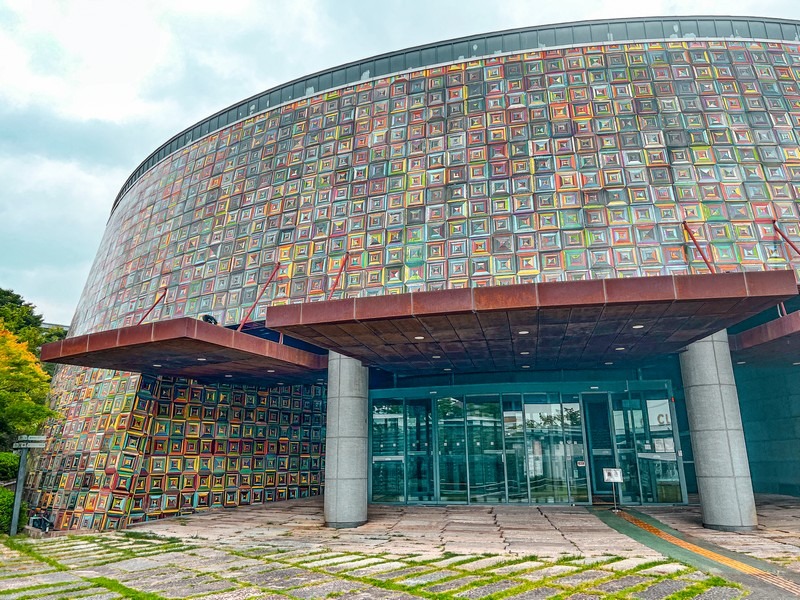
Discover Ceramics and Architecture
The Clayarch Gimhae Museum isn’t just one space or one building which is the first thing you will discover. If you visit on a rainy day, you will get wet because much of what there is to discover is actually outdoors. The very name, a fusion of ‘clay’ representing ceramics and ‘arch’ for architecture, embodies the fundamental spirit of the museum, so be prepared to walk around a bit and take in the buildings as much as what it inside the buildings.
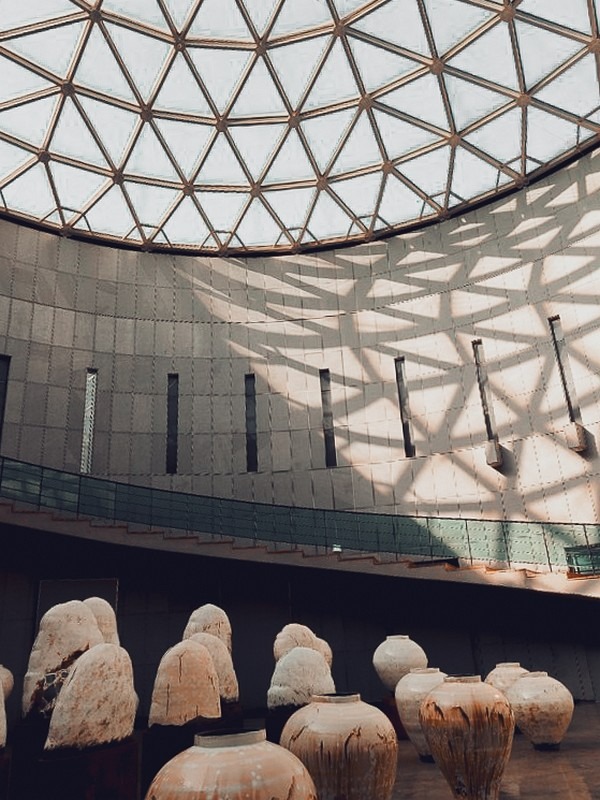
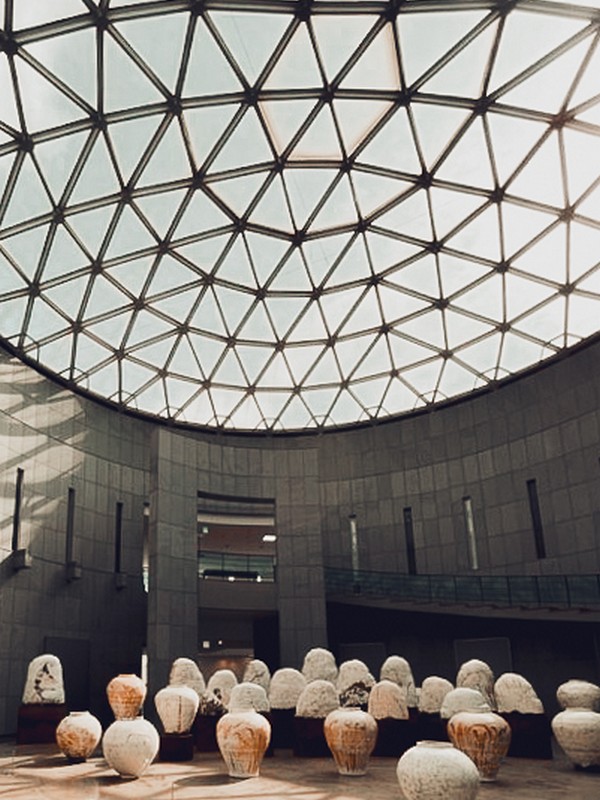
Ceramics, as a medium, holds infinite possibilities and has historically played a pivotal role in the progress of human society and certainly in the history of Korea. The Clayarch Gimhae Museum recognizes the importance of exploring new avenues in ceramics through architectural experimentation. As the center of Ancient Geumgwan Gaya and the birthplace of Buncheong ware, look out for the interesting details like the 5,000 fired tiles that now surround the exterior of the main exhibition space.
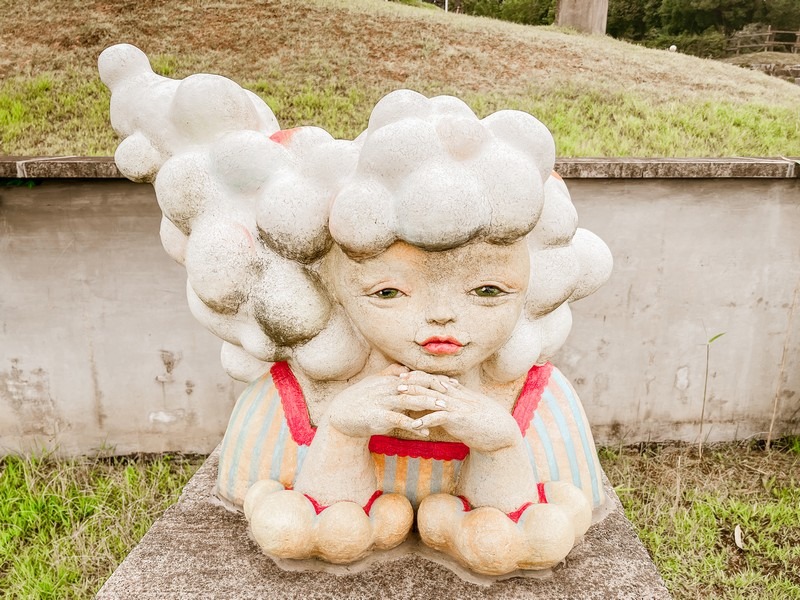
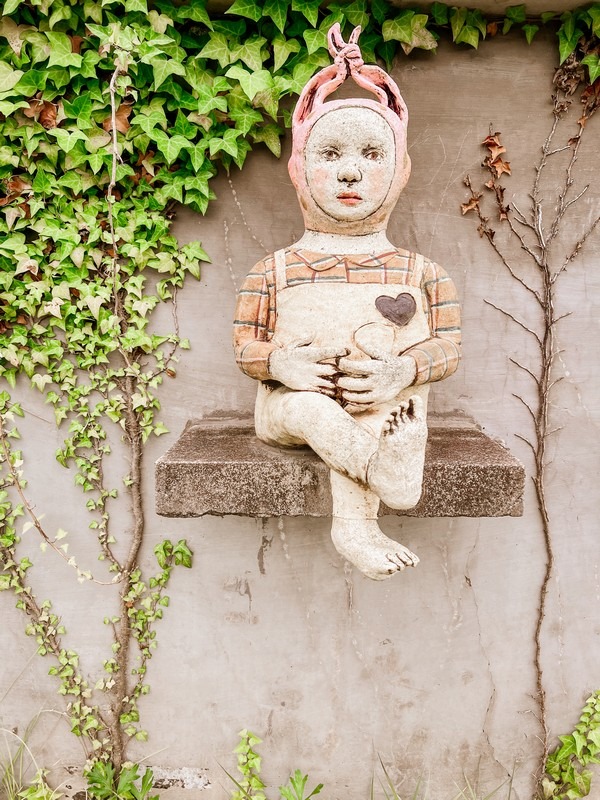
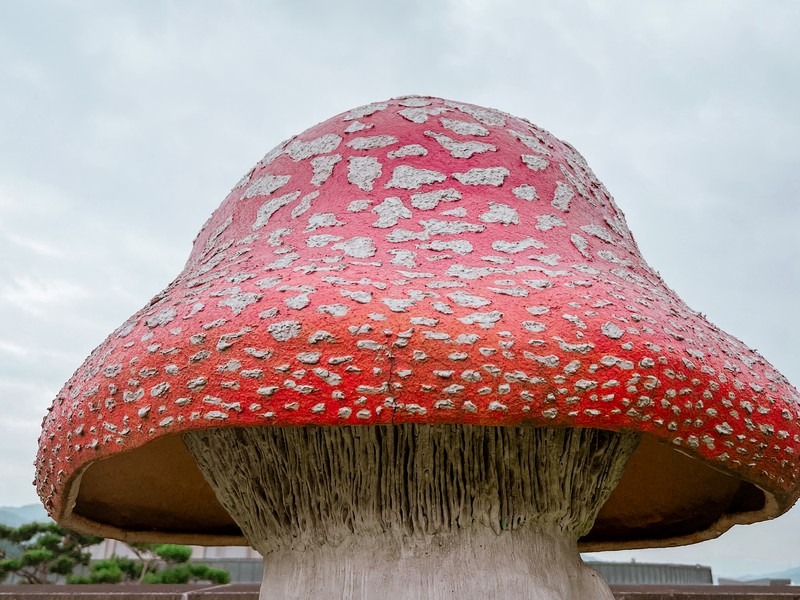
Outdoor Sculptures and Eco-Friendly Structures
On our visit, the first thing we did was explore the outdoors, mostly because it was rainy season so we wanted to catch everything while it was not dripping from the sky. You might be more inclined to start with the Dome House which is what you first see when you enter the grounds though.
Anyway, there are various garden areas as you walk up the hillside with quirky and fun statues that any children along with you will no-doubt enjoy. Grandiose mushrooms and characters with adorable and dreamy accessories sit here and there and lead to a fun swing set. The outdoor sculptures along with the eco-friendly Clayarch Tower and Art Shelter are meant to highlight the natural beauty of the museum through nature’s watercolors.
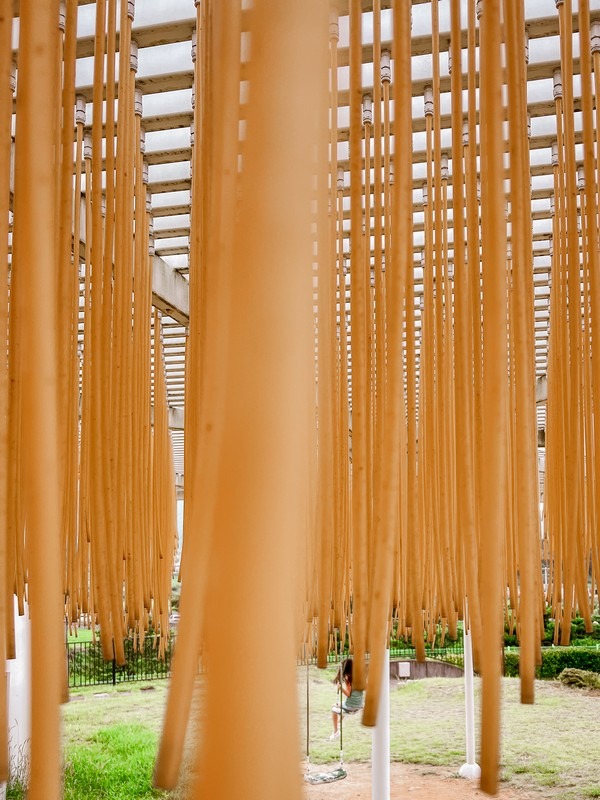
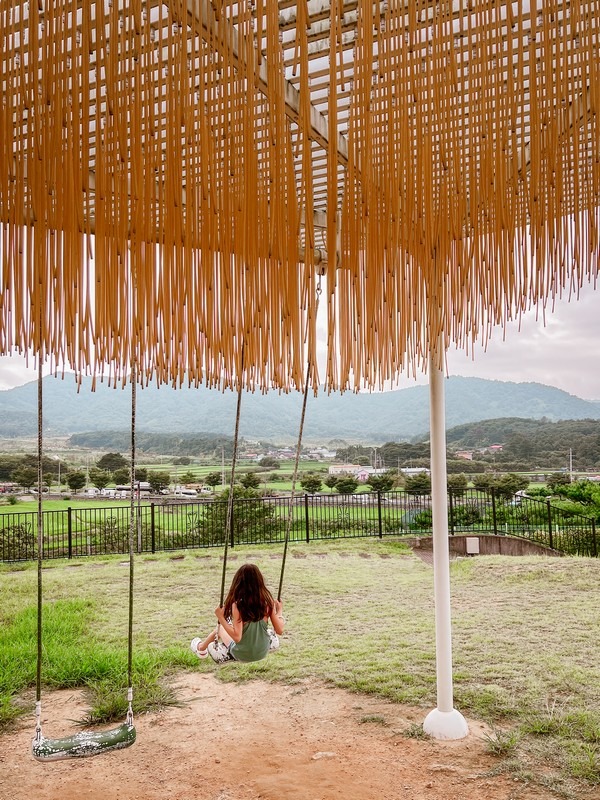

Exhibitions and Experiences
With exhibition halls as well as educational facilities, kilns, and more, there’s a lot to explore. Ask when you enter which buildings are open to the public though as some of the buildings are for local potters to use to facilitate the current-day ceramics industry. There’s plenty to see though.
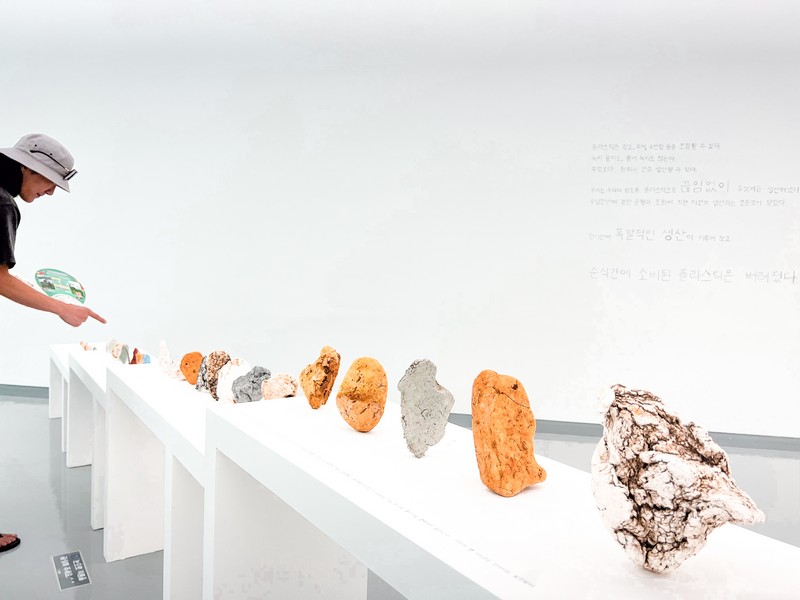
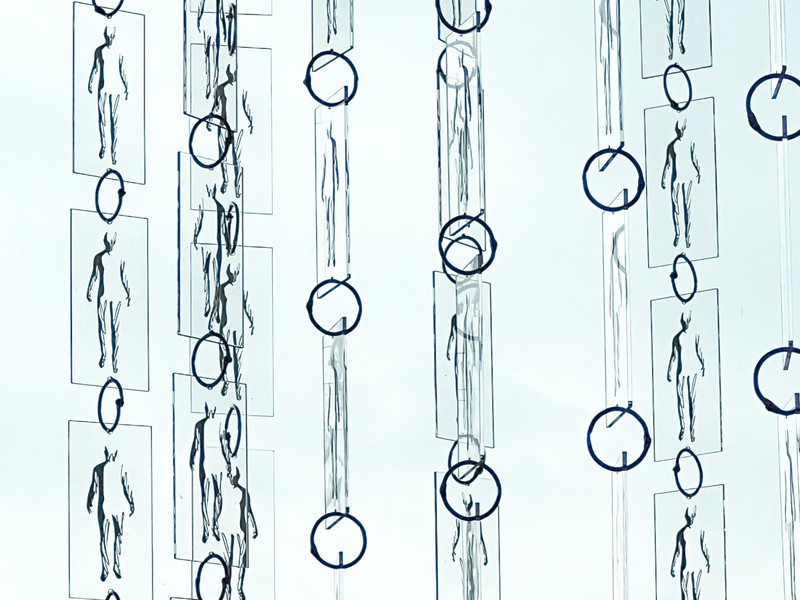
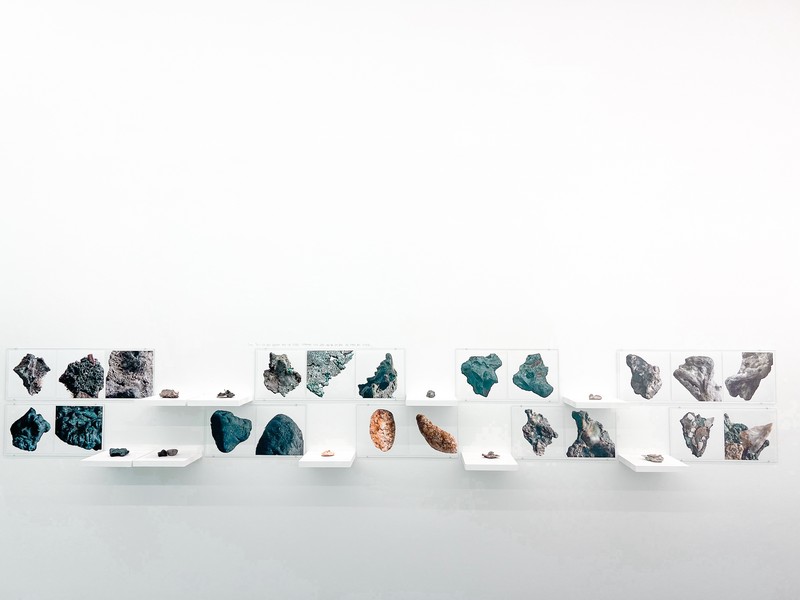
Gimhae’s commitment to its crafts tradition is evident in its status as a Creative City. There are around 240 craft companies and the Workshop Village that serve as creative spaces. Gimhae, while often overlooked by tourists, has a lot to offer visitors of all ages and is evolving its traditional arts into a dynamic and creative industry. If you have children, this is a really interesting area to visit with them as they offer a lot of opportunities for creative outlets.

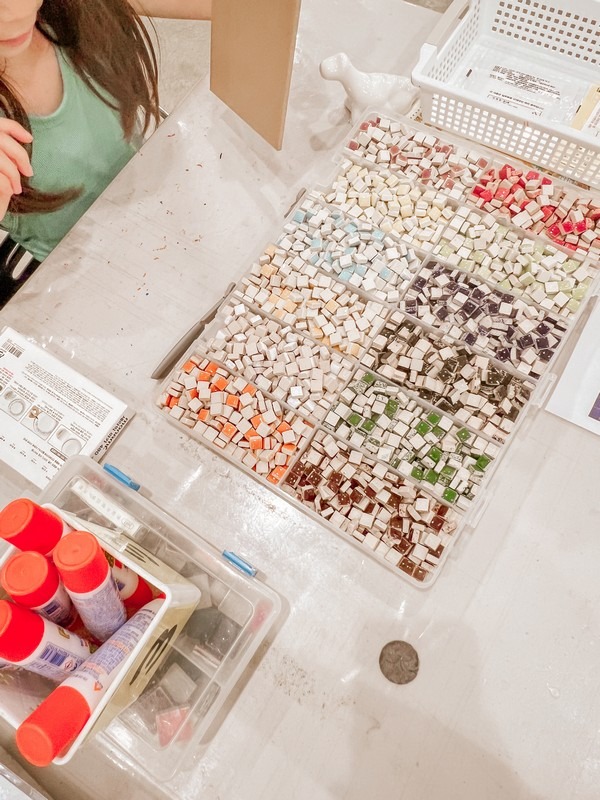
What To Visit Nearby
Something I was happily surprised to find when we arrived at the Clayarch Gimhae Museum was that there was more to explore nearby that also provide extended opportunities for learning.
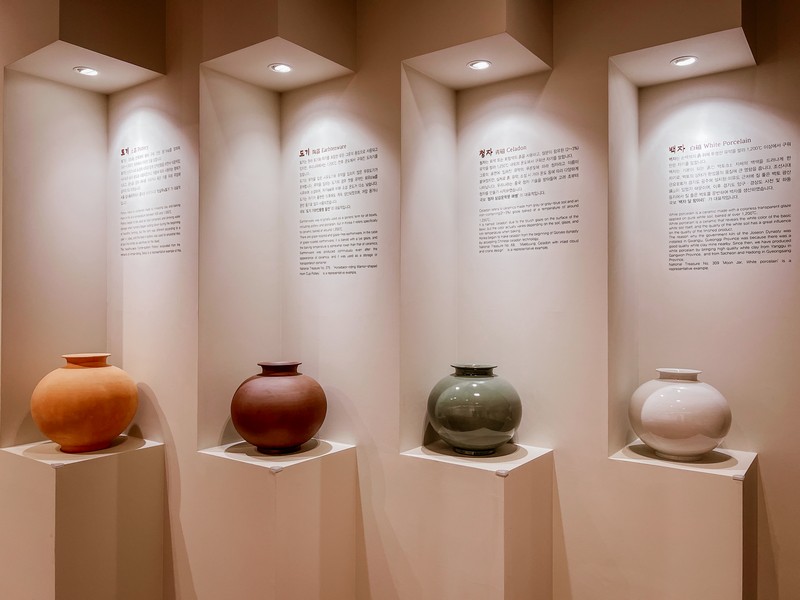
Gimhae Buncheong Ceramics Museum (김해분청도자기박물관)
Just next door, do not miss stepping into the Gimhae Buncheong Ceramics Museum. It’s not large but provides excellent information on Buncheong ceramics. When you first enter, you can learn the difference between the main types of ceramics in Korea including:
- Pottery: Originally used as a general term for all vessels like earthenware and pottery, in Korea it refers to pottery fired at a temperature of around 1,200℃. There are two types of pottery: glazed pottery and unglazed pottery. In the case of glazed pottery, it is fired using ash glaze, a lye glaze, and the firing temperature is somewhat lower than that of porcelain. Pottery continued to be produced even after the advent of porcelain, and was often used as storage or transport containers.
- Earthenware: Earthenware refers to a container made by kneading clay and baking it over a fire, and is fired at temperatures below 500 to 1,000 degrees Celsius. Earthenware began to be used for purposes such as food storage and water storage with the beginning of agriculture in the Neolithic Age and settlement life, but the form of use was different depending on the class, and it was also used to hold food for ancestral rites or to be placed in tombs for the dead.
- Celadon: Celadon refers to porcelain made using gray or grey-blue clay, applied with a glaze containing iron (2-3%), and fired at a temperature of around 1,250℃. It is named celadon according to the blue color of the glaze applied to the surface of the bowl, but in reality, it appears in various ways depending on the soil, glaze, and kiln temperature during firing. Korea adopted Chinese celadon technology and began making celadon in the early Goryeo Dynasty.
- White Porcelain: White porcelain refers to porcelain made by applying a transparent glaze over pure white clay and firing it at over 1,200℃. White porcelain is a porcelain that exposes the white color of white clay itself, which is the basic clay, and the condition of the white clay has a great influence on the quality of the finished product.
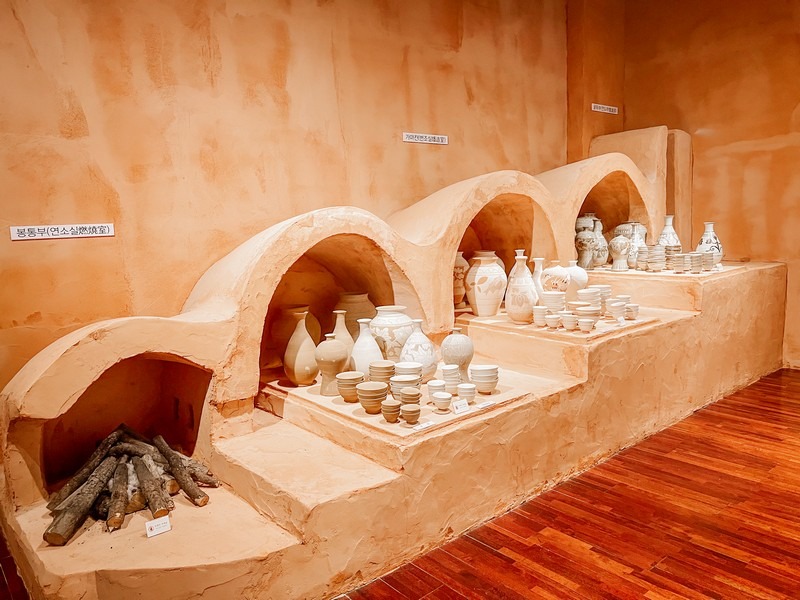
After learning the basics, there is more information about Buncheong Sagi, the porcelainware this area is well-known for. Buncheong ware is porcelain made by mixing white clay on gray or gray-black clay, then applying a glaze and firing it. Buncheong ware began in the late 14th century, succeeding celadon, and was produced for about 150 years until the early 16th century, and became the most simple and folk-like ceramic among Korean ceramics.
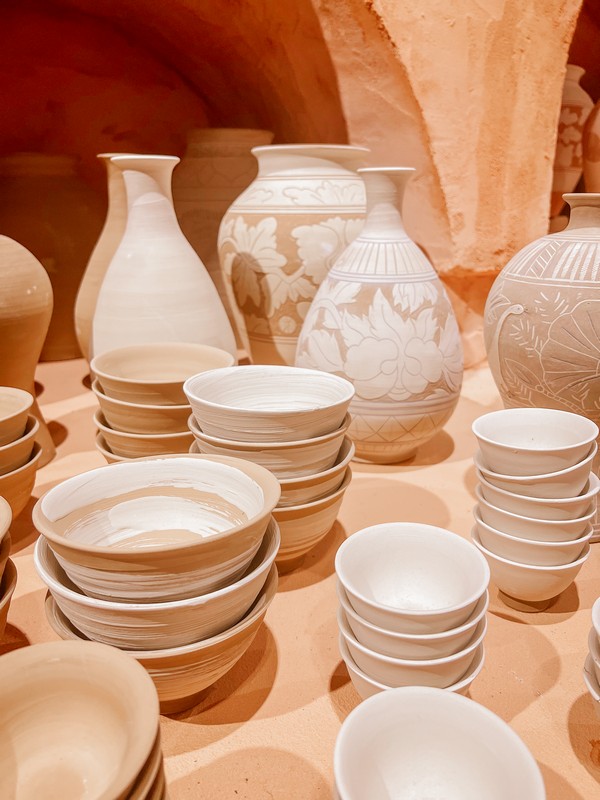

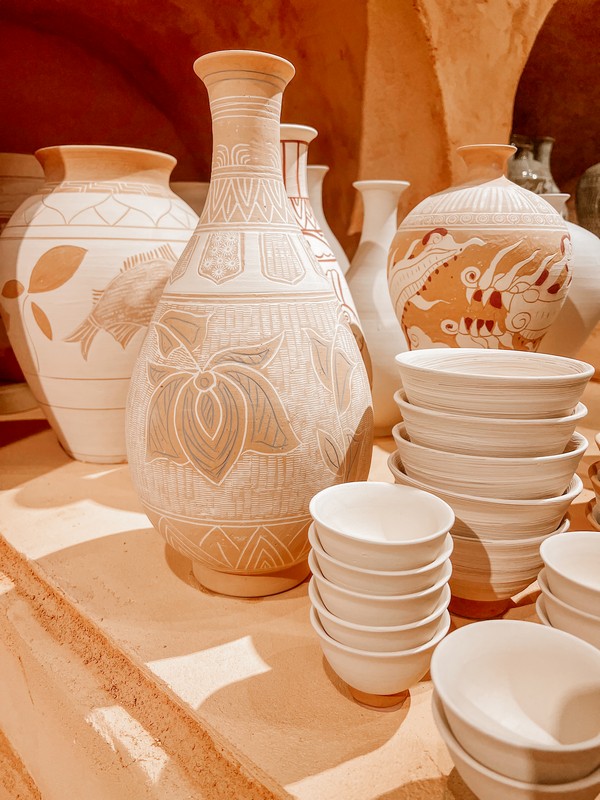
The next section of the museum showcases the firing process for Buncheong ware. Kilns for firing Buncheong ware and white porcelain became popular throughout the country, and it was confirmed that a number of kiln sites existed in Gimhae as well. Directly across from the step-by-step kiln showcase is a spot the kids you have will probably enjoy. Using some of the tools, they can decide how they would decorate their own Buncheong ware.
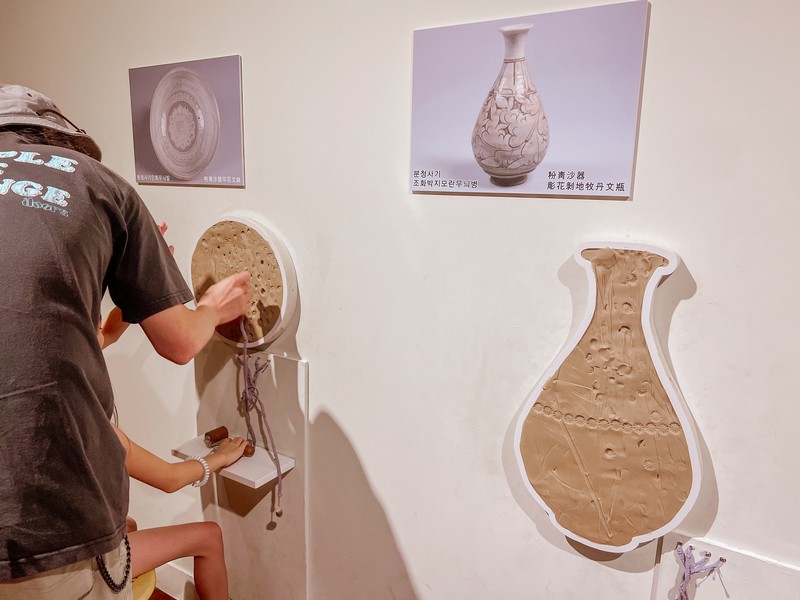
In the 1970s, the porcelain industry in Gimhae entered a renaissance period with the establishment of ‘Gimhaeyo’ in Jinrye, Gimhae. Potters from all over the country gathered in Gimhae, and currently, more than 120 potters are actively engaged activities here. In particular, the Gimhae Jinrye area was selected as a ‘ceramic cluster district’ due to the concentration of more than 60 ceramic artists. It is still leading the development of ceramic culture by holding various events and contests throughout the year both in Korea and abroad.
- Address: 17 Buncheong-ro, Jillye-myeon, Gimhae-si, Gyeongsangnam-do (경상남도 김해시 진례면 분청로 17)
- Hours: Tuesday – Sunday: 9:00am ~ 6:00pm
- Admission: Free
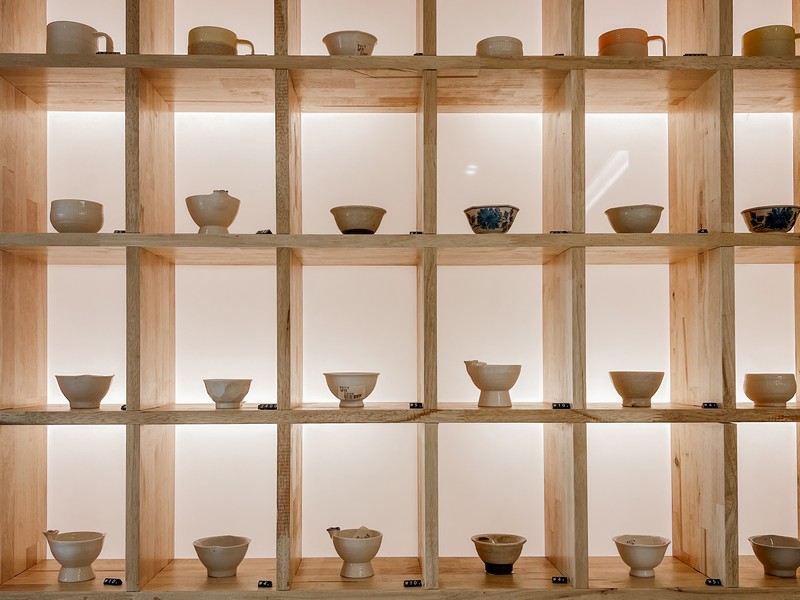
Gimhae Buncheong Ceramic Exhibition and Sales Hall (김해분청도자전시판매관)
Just between the two museums mentioned above, there is an exhibition and sales space if you’re interested in purchasing your own piece of local artisan ceramics. There are some stunning pieces inside and something for every budget. From small teacups for a few Korean Won to a Korean moon jar I saw for about $10,000, there’s plenty to choose from if you’re interested in taking something home.
- Address: 21 Buncheong-ro, Jillye-myeon, Gimhae-si, Gyeongsangnam-do (경상남도 김해시 진례면 분청로 21)
- Hours: Tuesday – Sunday: 9:00am ~ 6:00pm
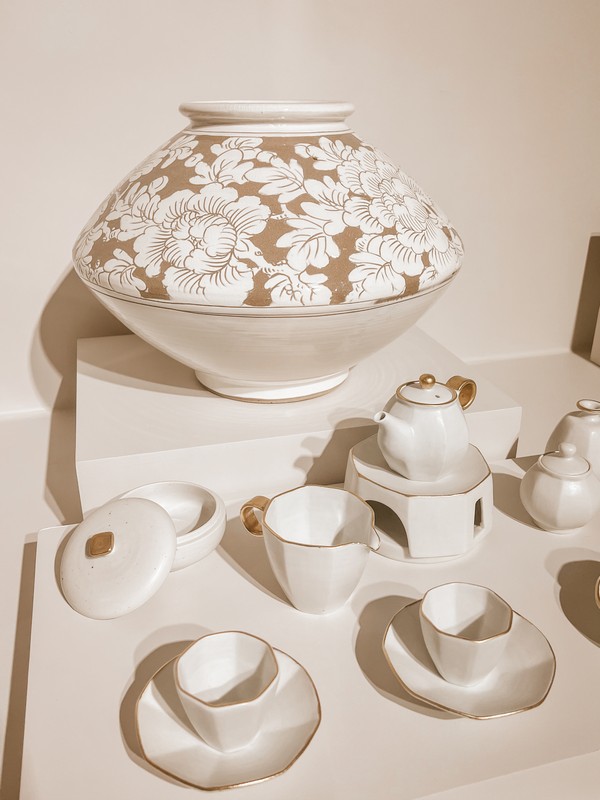
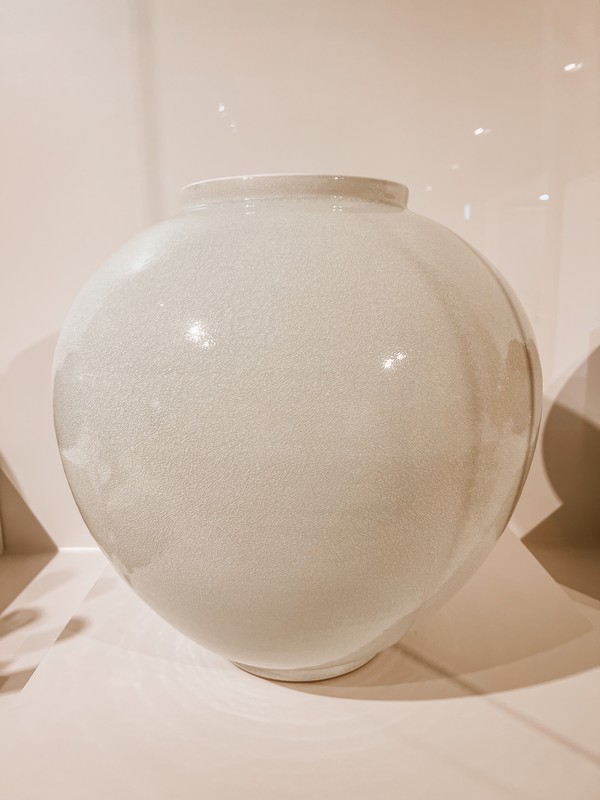
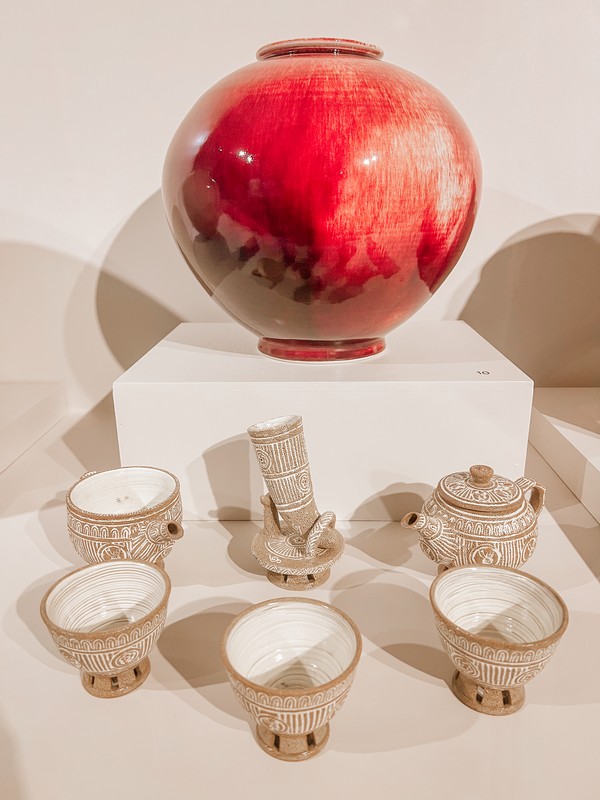
Seasonal Events To Celebrate Ceramics
If you’re interesting in experiencing more and learning about the ceramics history of Gimhae, don’t miss the Gimhae Buncheong Ceramics Festival (김해분청도자기축제). Gimhae Buncheong Ceramics Festival celebrates the unique Korean buncheongsagi, a grayish-blue-powdered celadon. Enjoy various programs such as cooking with buncheong ceramic pot, pottery making experiences, flying a wish balloon, and more.
- When: Usually October
- Address: 275-35 Jillye-ro, Gimhae-si, Gyeongsangnam-do (경상남도 김해시 진례면 진례로 275-35)
- Website: http://festival.buncheong.co.kr/
There’s more to Gimhae, Korea than a lot of people realize and a major creative ceramics industry. Plan to learn and create when you visit!
Did you like this post? Pin it!
